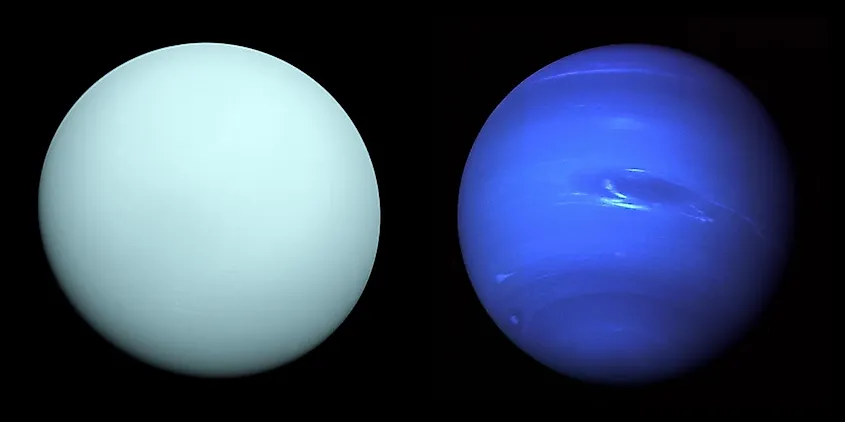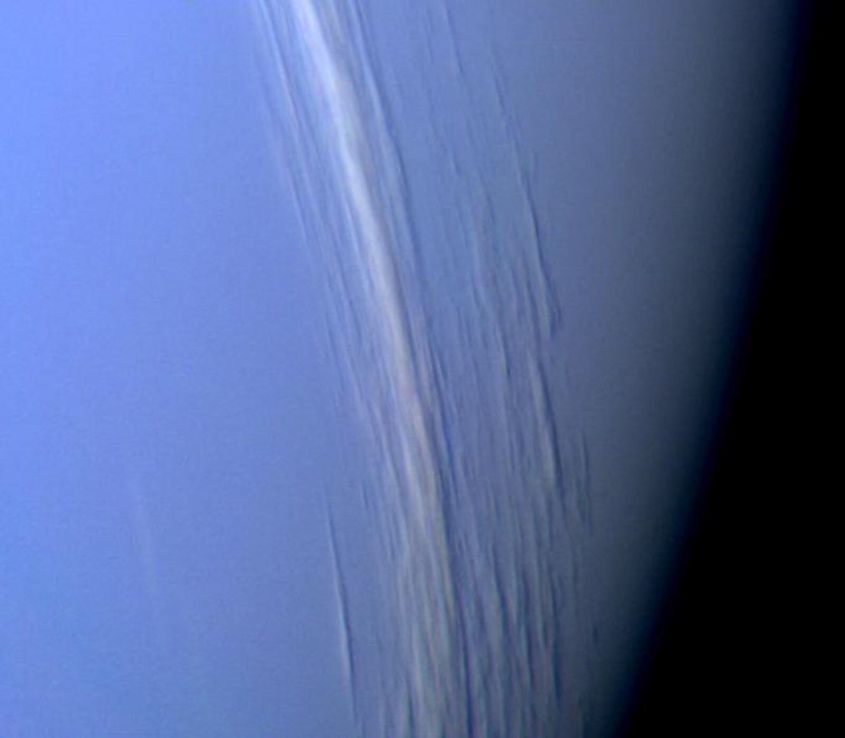
Why Is Neptune Blue?
Neptune is blue because the atmosphere, made of helium and methane, absorbs red light while reflecting blue light. Methane only appears in trace amounts but it is to blame for the absorption of red light. Both Neptune and Uranus are made out of these materials. Uranus and Neptune are classified as ice giants. An ice giant is similar to a gas giant, the difference being that an ice giant contains more heavy elements in its interior than a gas giant does. Neptune is the furthest planet from the sun and is invisible to the naked eye. Interestingly, Neptune is the only planet in our solar system discovered through mathematics rather than observation. Astronomers had noticed irregularities in the orbit of Uranus that the gravitational pull of another planet could explain. When they looked at where this planet was predicted to be, they found Neptune.
Voyager 2

Neptune is named for the Roman god of the sea. It would be easy to assume that Netpune's name derives from its blue color. However, astronomers did not know that Neptune was blue until 1989, when the Voyager 2 spacecraft sent back images of the ice giant. Voyager 2 did not only show the blue atmosphere but also the presence of faint rings around the planet and five additional moons. The moon, Triton, was the only one discovered shortly after the discovery of Neptune with the aid of a telescope. Triton is also the only large moon in the solar system that displays retrograde rotation. This means that it orbits opposite the planet’s rotation. The orbit of Triton is slowly growing smaller as Neptune's steals gravitational energy from its largest moon. Astronomers estimate that in about 3.6-billion years, Triton will break apart and form another system of rings around Neptune.
Other Blue Planets

Neptune, along with Uranus, is one of the two blue planets in the outer solar system. Since Neptune and Uranus are similar in composition, it makes sense to ask why Neptune is so blue and Uranus is not. The blue color comes from the absorption of red light by methane. Astronomers were stumped as to why Uranus is not as vibrant even though it contains more methane. There is no definitive reason for this, however, and astronomers think it could be due to the thicker middle atmosphere on Uranus, which creates a haze around the planet. Neptune’s atmosphere is extremely active with winds that can reach speeds nine times faster than the fastest winds on Earth. This causes methane to turn to snow, thus pulling it further into the planet. Without as thick of a haze, Neptune appears bluer than Uranus. Another theory suggests that there could be something else in Neptune’s atmosphere that is responsible for the planet’s bright color, but it is yet to be discovered.
Earth is also known as the blue planet but for different reasons. Liquid water appears blue when seen from space. However, this is not due to the water being blue but due to the water reflecting the color of the atmosphere. Rayleigh scattering causes blue wavelengths of light to scatter, giving Earth’s atmosphere a blue color.











